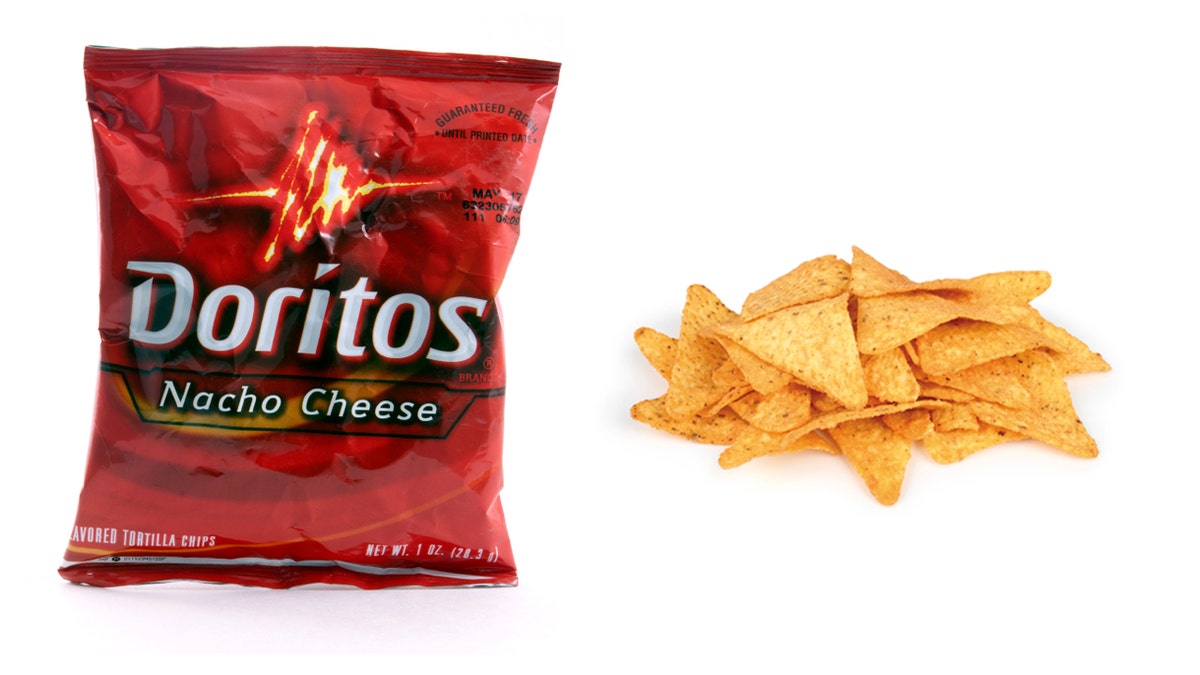
Doritos fans don't get much bang for their buck per bag. (iStock)
Many a hungry snacker has ripped open a fresh bag of chips only to find a few measly morsels at the bottom of the pack.
While we know that a little bit of air -which is really nitrogen gas, used to prevent the chips from oxidizing and going stale--is needed to protect the food. But sometimes customers look at the portion and feel duped.
So how much air is really hiding in that package of chips?
Brooklyn-based photographer and food artist Henry Hargreaves used a bit science and math to determine the true snack-to-air ratio of some popular snack foods.
In his new project “Waste of Space,” Hargreaves first dunks an unopned snack bag into a large beaker of water to calculate a package’s total volume. Then he finds the mass of the chips and subtracts to find how much air is really hiding in our snacks.
The results are pretty surprising.
A small can of Pringles was found to be 66 percent air and just 34 percent chips. Chex Mix was had a 56 to 44 percent air to snack mix ratio.
But there’s bad news for Doritos lovers. The bag Hargreaves measured was 86 percent air and just 14 percent chips.
"Packaging and the display of food has become an illusion an fantasy," writes the artist. "We are shown what the brands think we want to consume. Large flashy packages, great value for money filled with a bounty of food. But when you open the package the reality is often far from your expectation."
Through his experiment, Hargreaves determines that the most environmentally-friendly—and least deceptive-- way to package a bag of chips is to vacuum seal it and is hoping to more attention to the idea of wasteful packaging.
